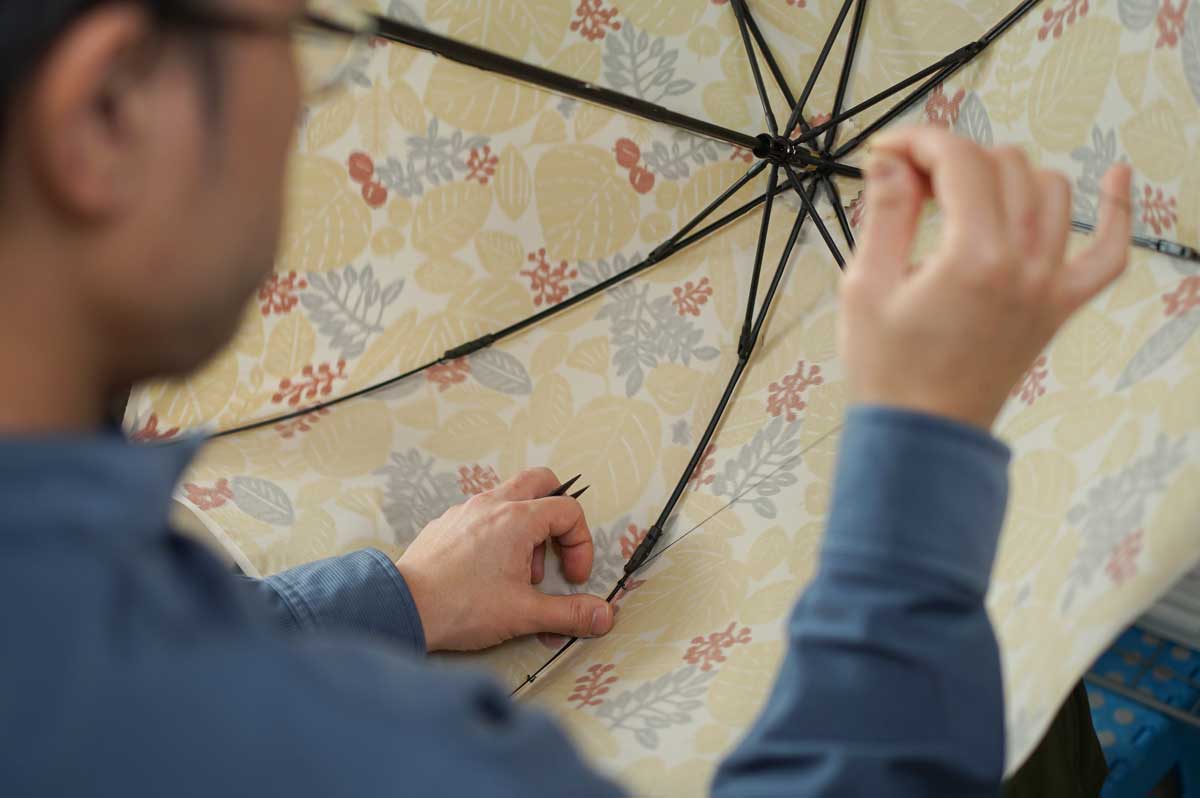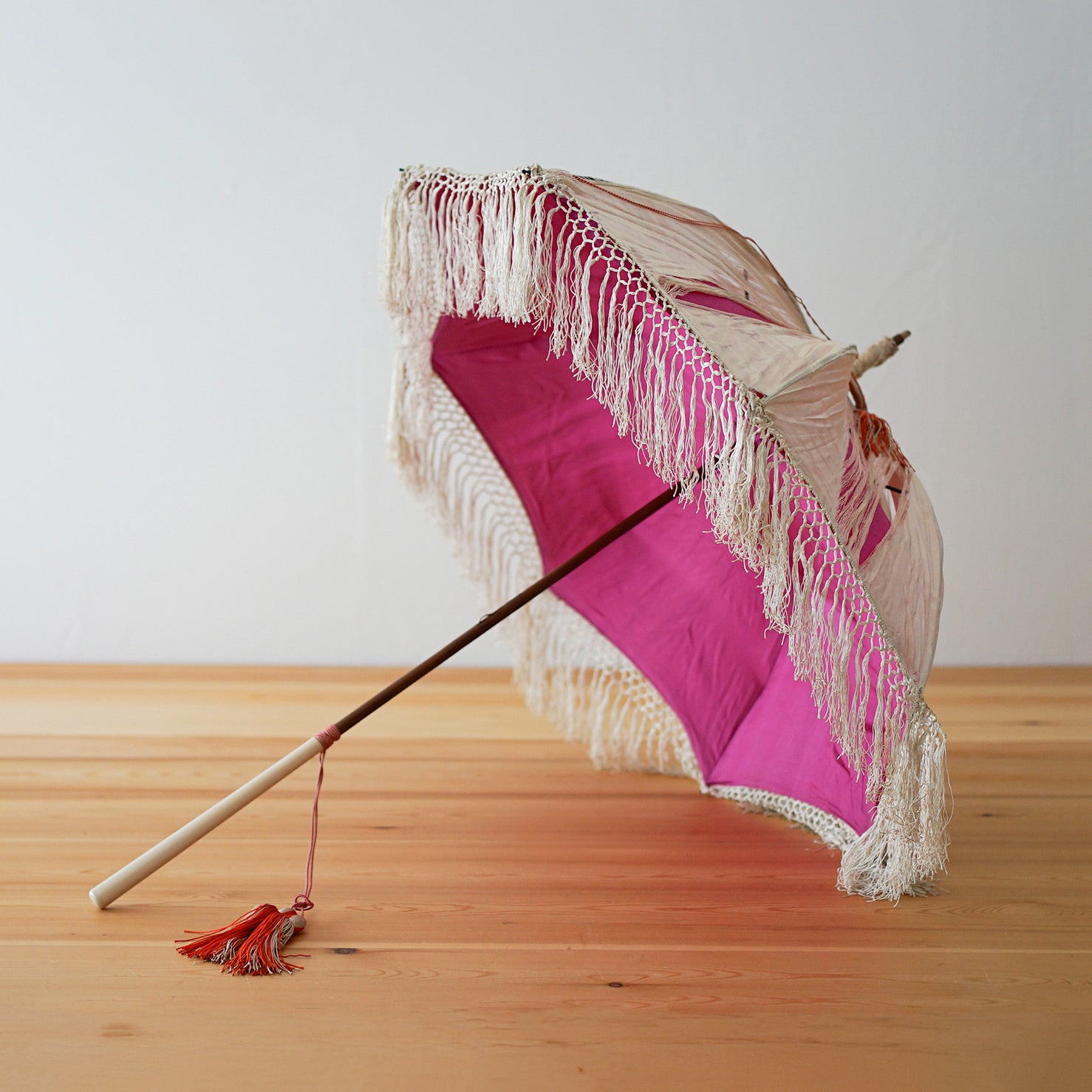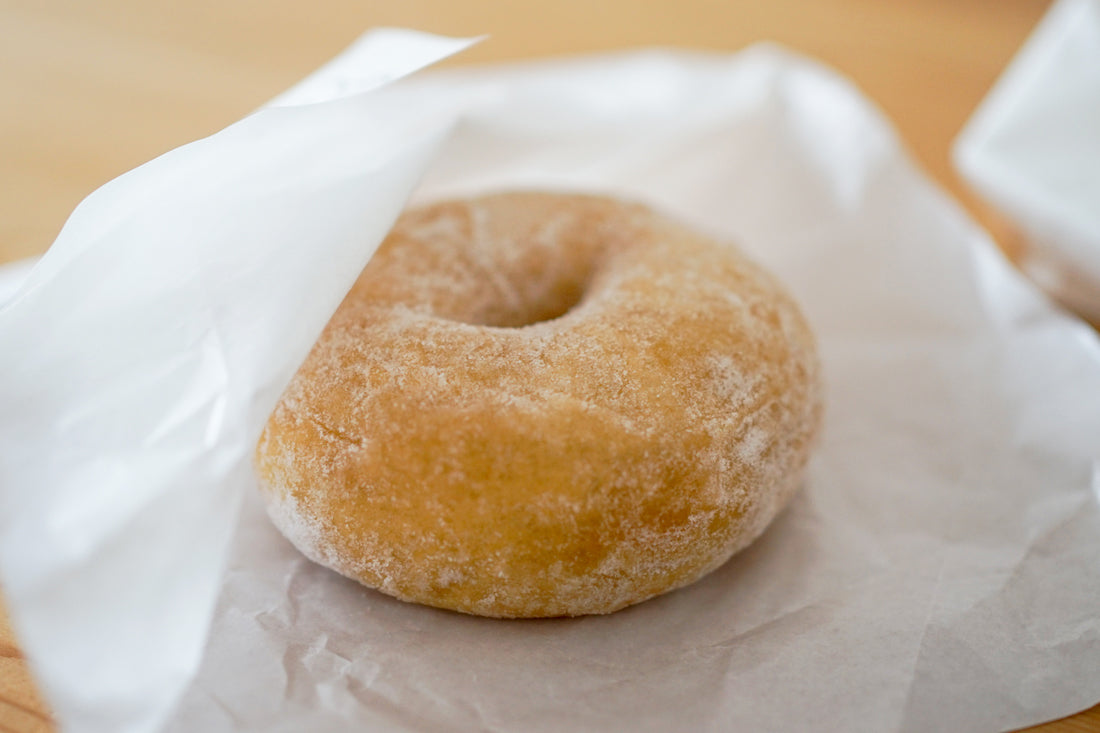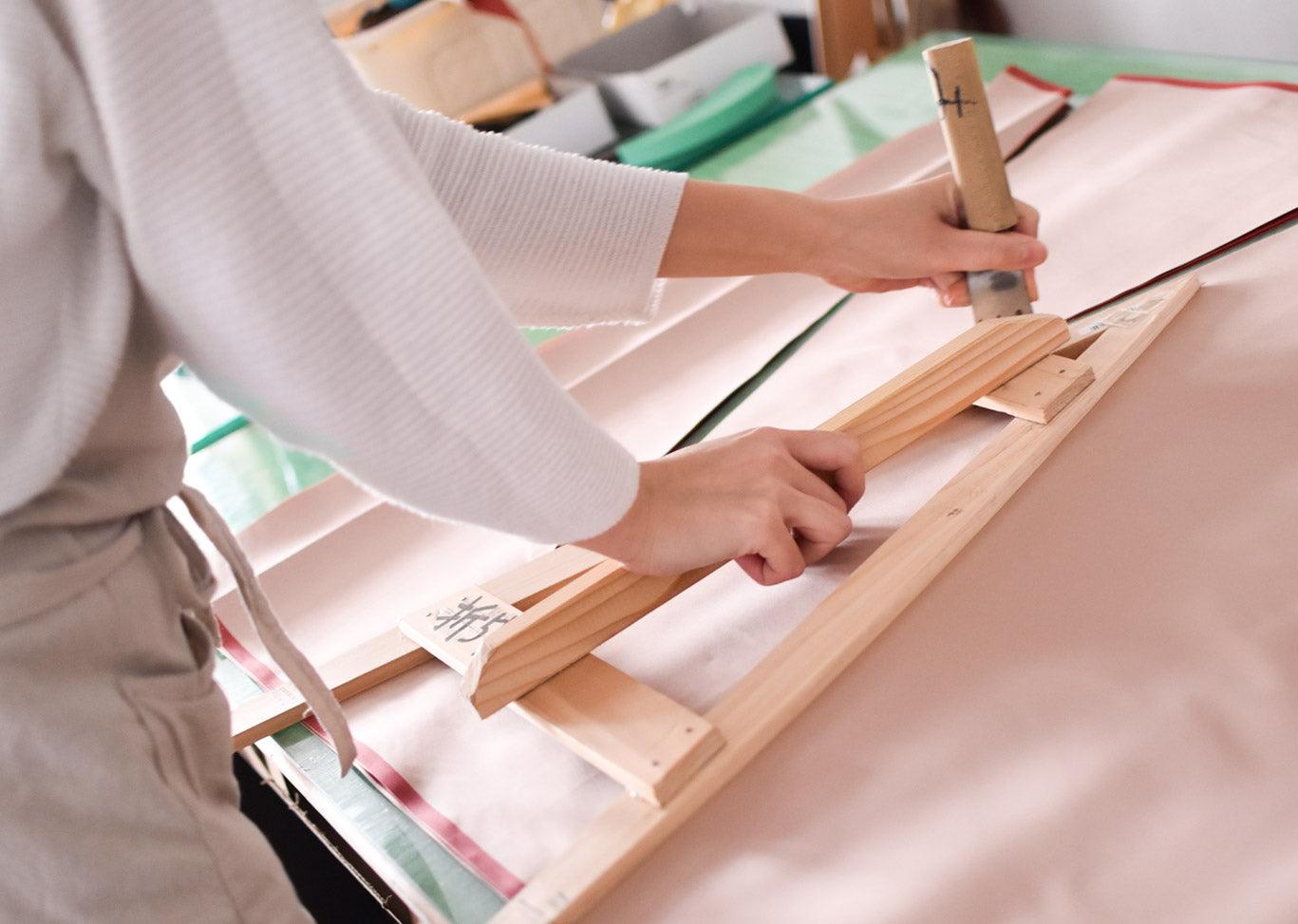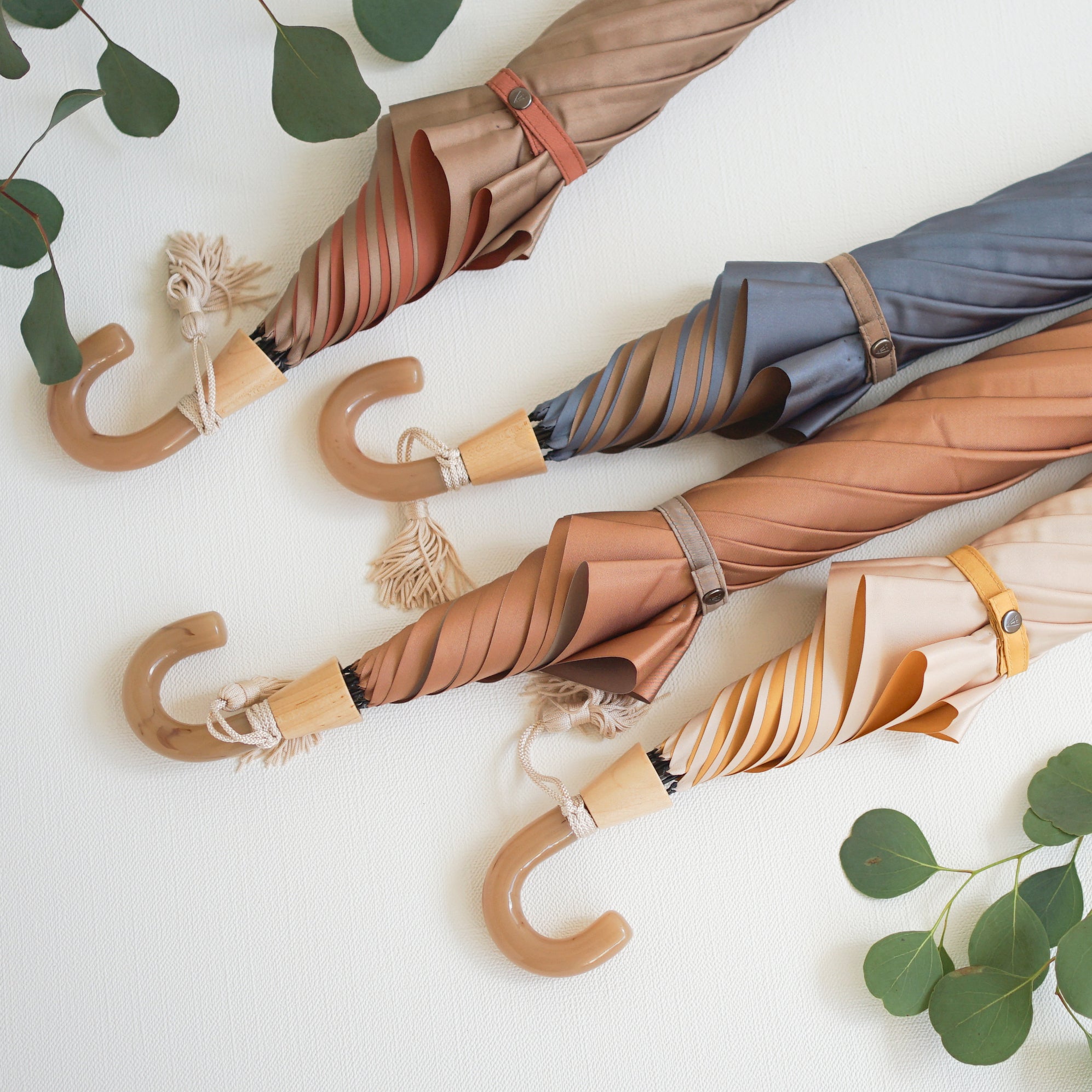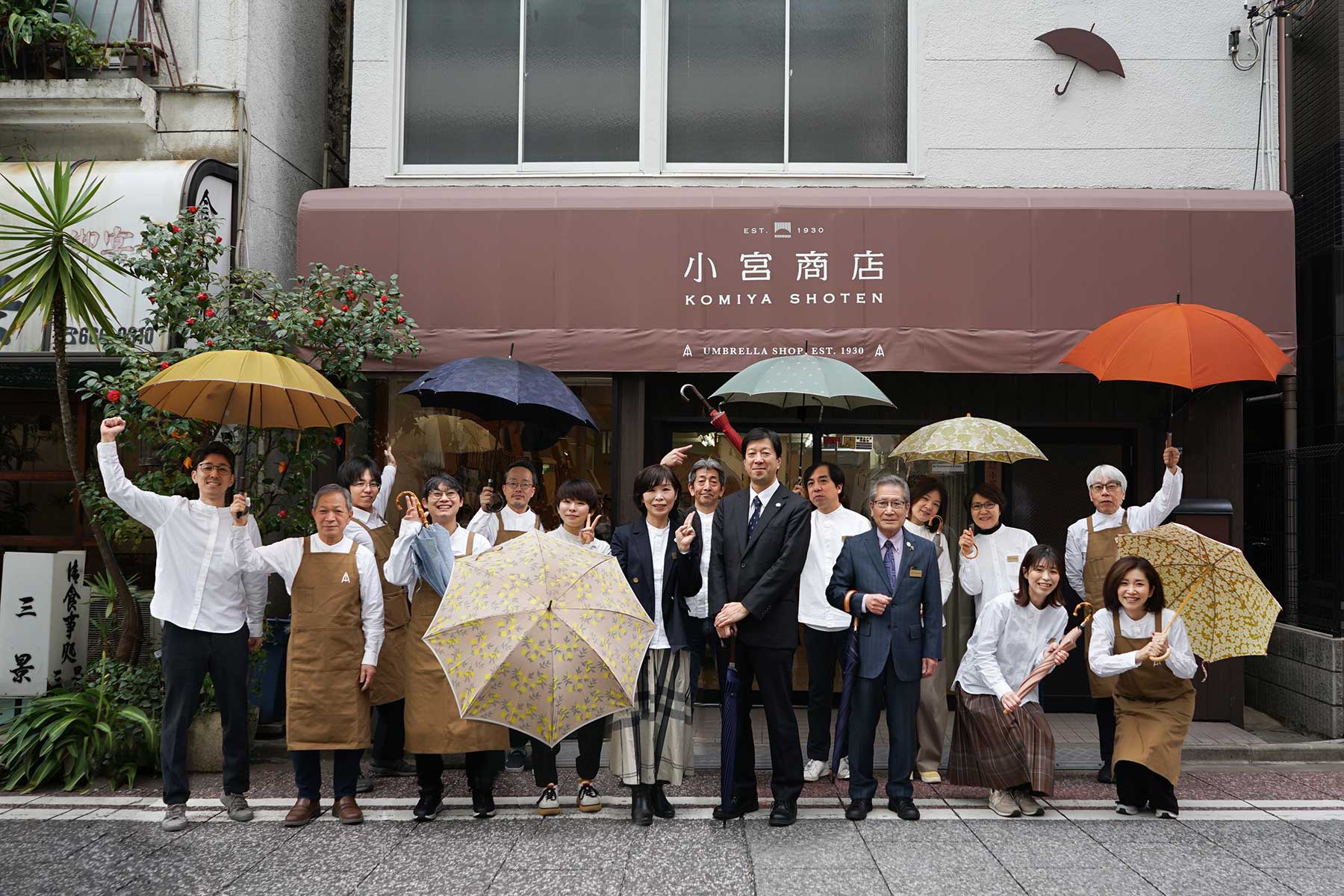Another person who played an active role in the birth of Western-style umbrellas in Japan
Along with Mr. Sakamoto, who devoted himself to making Japanese-made umbrellas (see previous article, "Why did the No. 1 powder brand switch to Western-style umbrellas?"), we would like to introduce another person who was active in the early days of Western-style umbrella manufacturing in Japan.
He was the son of a samurai who served the Tokugawa family during the Edo period, and after the Meiji Restoration, with the collapse of samurai society, he opened a Chinese goods store dealing in imported goods and Western articles, and in 1872 began trading in Western umbrellas.
He then began making umbrellas using imported umbrellas as a model. At the time, materials for umbrellas were not available in Japan, so he made use of his experience as a Chinese goods store and sourced materials from London, independently promoting his business.
For the umbrella fabric, Sakamoto Shoten used Kai silk, a silk fabric from the home of silk weaving. They produced beautiful products and became famous as pioneers of domestic umbrella manufacturing. The umbrellas delivered to the Imperial Court in particular were highly acclaimed for their style, which was the same as the fashionable imported goods from France.
The two rivals presented an umbrella to the Imperial Family together
Sakamoto Yushichi and Uemura Hikojiro lived in the same era and both contributed to the development of Japanese umbrellas as friendly rivals. In fact, these two men "co-starred" in the same historical episode.
The Tokyo Umbrella Association decided to present umbrellas to the Imperial Family, and the Emperor was presented with a gentleman's umbrella made by Toshichi Sakamoto, while the Empress was presented with a women's umbrella made by Hikojiro Uemura. Both men were great contributors to umbrella manufacturing in Japan, and both built the foundation for the development of the umbrella industry, making them benefactors to the industry.
Their techniques and culture have been passed down to future generations, and now their value is so widely recognized that umbrellas made in Tokyo (Tokyo Western-style umbrellas) are certified as "Tokyo Traditional Crafts."
Thanks to the contributions of these two men, Western-style umbrellas became all the rage in the Meiji era. Women's parasols (parasols) were especially trendy among the upper classes.
The final scene in the story is the celebration of the silver wedding anniversary of Emperor Meiji and his wife, Empress Ikeda. The vehicle that the couple was in did not have a top, and was what we would now call an "open car."
The Empress, who was a fashionable lady at the time and stayed close to the Emperor, elegantly held a parasol in her hand. Nishiki-e prints from the time show the ladies-in-waiting accompanying the Emperor also holding parasols.
After that, parasols became an object of desire among women and spread as fashion items.


